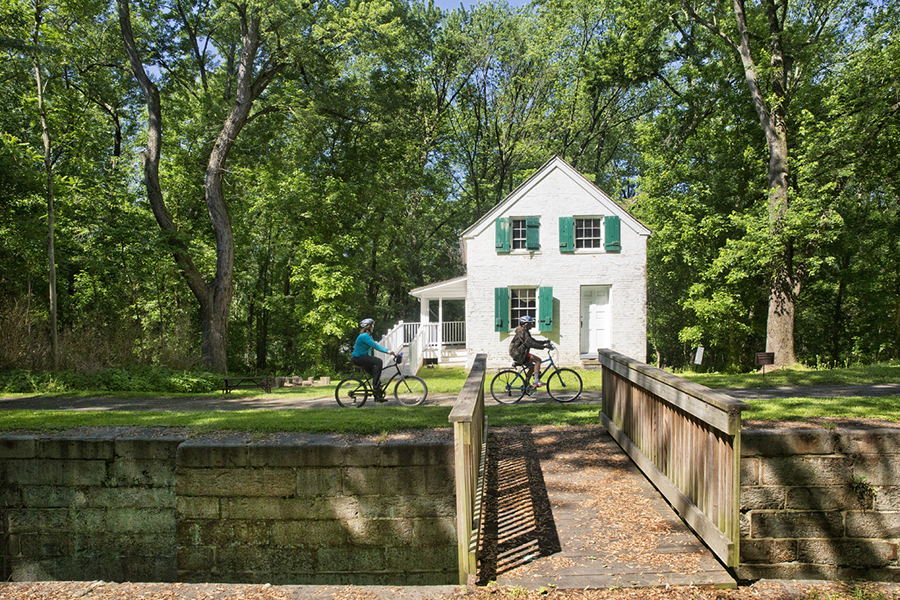
Our region has been so pivotal to the founding of our nation, it’s easy to forget that another, perhaps even more important part of our history is right next door. When you’ve had your fill of the colonial period, of the Liberty Bell and Independence Hall, you’ve got more exploring to do, outside the city.
Our mid-Atlantic region contained many of the border states that formed the divide between North and South during the Civil War. Our neighbor to the south, Maryland, therefore played a critical role as a gateway for enslaved people escaping to the Northeast and their freedom. That effort is celebrated in the metaphor, narrative and legacy of the Underground Railroad, as enshrined in the National Underground Railroad Network to Freedom, a program that recognizes sites that are home to verified stories of enslaved people freeing themselves from bondage.
Since Maryland is home to many of these stories of the Underground Railroad, it’s the perfect place for a road trip through history. And while many of the narratives exist only in fragments, partially hidden due to the dangerous, secret nature of the Railroad, with a little help from tour guides, exhibits, and the list below, those stories come alive when you visit the places where they happened. So we scoped out some of the most important sites in the historic movement toward freedom–and rounded them up into a trip made of life-changing stories, from the origins of slavery in the U.S. to the great promise of Emancipation.
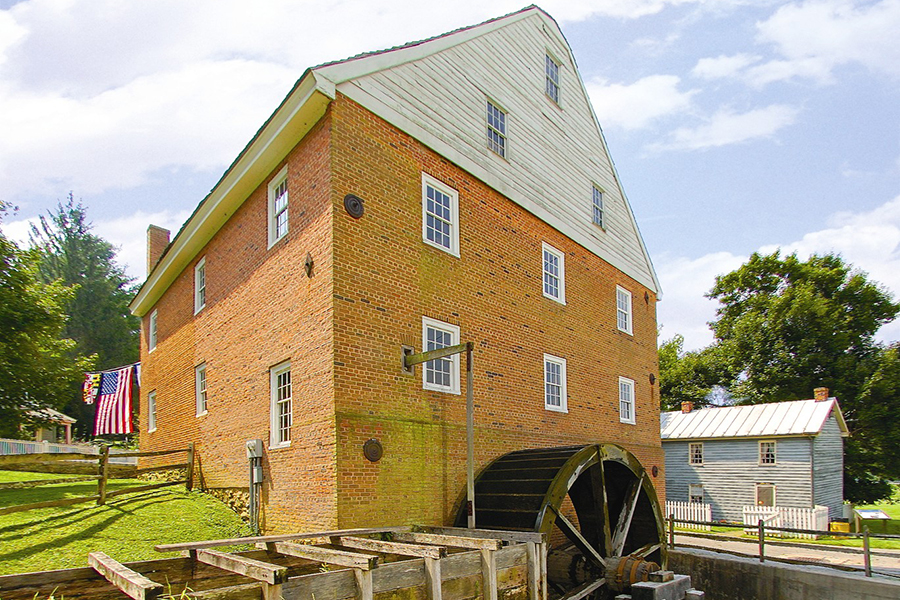
Union Mills Homestead
The first two stops on your tour showcase how different the everyday experience of enslaved people could be–and they demonstrate that wherever and however slavery existed, inhumanity and cruelty were omnipresent.
While much of antebellum Maryland was not abolitionist, it also wasn’t as dependent on labor by enslaved people as other states, particularly states farther South. That meant that many enslaved people worked in the home or in small groups, rather than on large farms. You’ll see some of that culture at Union Mills Homestead, a still-standing 18th-century mill and home. Here, enslaved laborers performed duties like cooking, cleaning and childrearing, while free laborers did much of the industrial work in operating and maintaining the mill and its attached businesses.
However, the proximity between the enslaved and enslavers as they lived under the same roof did not mean the institution of slavery was any less corrosive. “Slavery is in every way enforced through force. And sometimes that’s physical violence,” says the site’s director Kyle Dalton.
The owners of Union Mills Homestead were a wealthy, influential family. When the last members of the family who had witnessed slavery on the Homestead grew up, two composed memoirs, and both writers recall their pre-Civil War childhoods with both nostalgia and some distress, particularly when recounting the brutal punishment of an enslaved woman accused of stealing. Some enslaved people on the homestead attempted to escape bondage, and some may have been successful–multiple “fugitive slave” or freedom seeker ads taken out by the family attest to escape attempts to the North, though their ultimate fate is unknown.
When you visit the homestead, you’ll see many of the structures that shaped the daily life of enslaved people and the free laborers they worked beside, including a still-functioning mill, a blacksmith station, and more. The home itself is where the domestic work took place–and though there are many artifacts from the period, that’s where you should make sure you meet up with a tour guide, who will make the day-to-day challenges of enslaved people in the household come to life with a wealth of insightful narratives.
“You have to meet with our docents to uncover those stories–and ask questions!” Dalton says.
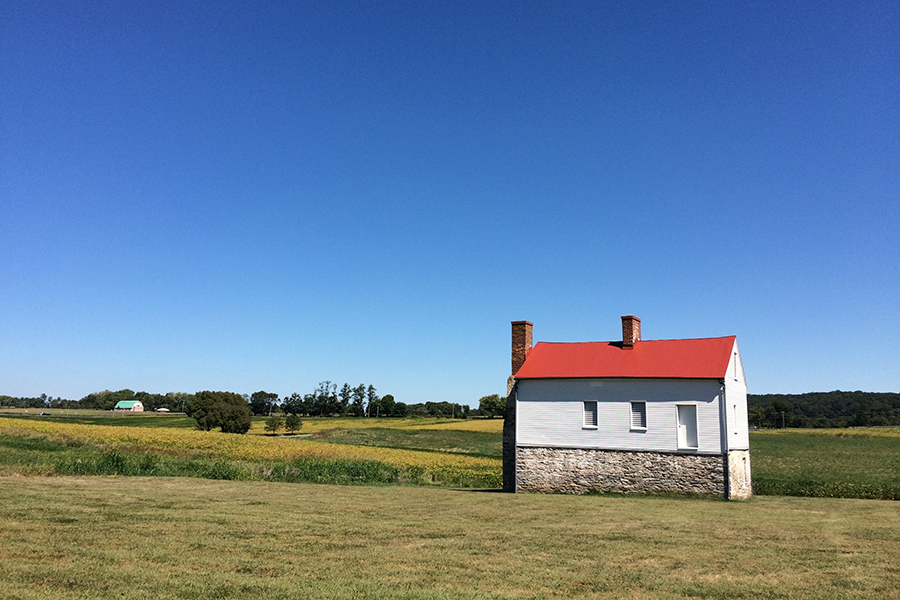
Monocacy National Battlefield
Maryland’s unique transitional culture between the industrial North and the agricultural South created a different environment for enslaved people. But what happened when southern planters migrated North? Something like that happened when planters from the French Caribbean moved into town and founded L’Hermitage, a former plantation now known as Best Farm at Monocacy National Battlefield.
“We make sure people know that context when they come to the battlefield, and not just the battle,” says park ranger Tracy Evans. “Because slavery is why we have the war in the first place.”
It’s a disturbing narrative that highlights the complex moral contradictions of enslavers. Adjacent to the battlefield, L’Hermitage was founded by the French Catholic Vincendieres family, who had previously owned a plantation in Saint-Domingue. The new plantation continued the practices of French-Caribbean style plantations, housing ninety enslaved people out in front of the house by a major thoroughfare, putting the brutality of slavery front and center for all to see.
Maryland at the time had laws about the “humane” treatment of enslaved people, and multiple neighbors filed complaints with the state government about excessive cruelty, unmerciful punishment, and neglect–whether out of concern for the enslaved population, or as a way to express their enmity for Victoire, the French, female owner of the massive plantation.
Either way, these case filings highlight another route that enslaved people could take to attain their freedom. In addition to multiple physical escapes from the farm, one neighbor helped fund a case in which an enslaved person contended that he was being held in slavery by the Vincendieres illegally–a case that he ultimately won.
L’Hermitage eventually came to be known as the Best Farm when a new family moved in–and you can still see the structures and property of that farm today. Multiple exhibits around the battlefield give a deeper dive into both the L’Hermitage and Best farms, and you shouldn’t skimp on learning about the battle either. Taking place during an election year for Lincoln, both Confederate and Union leadership knew the battle could be important as to whether Lincoln got a second term–and the battlefield victory, as well as Lincoln’s victory, ensured the war effort continued unhindered.
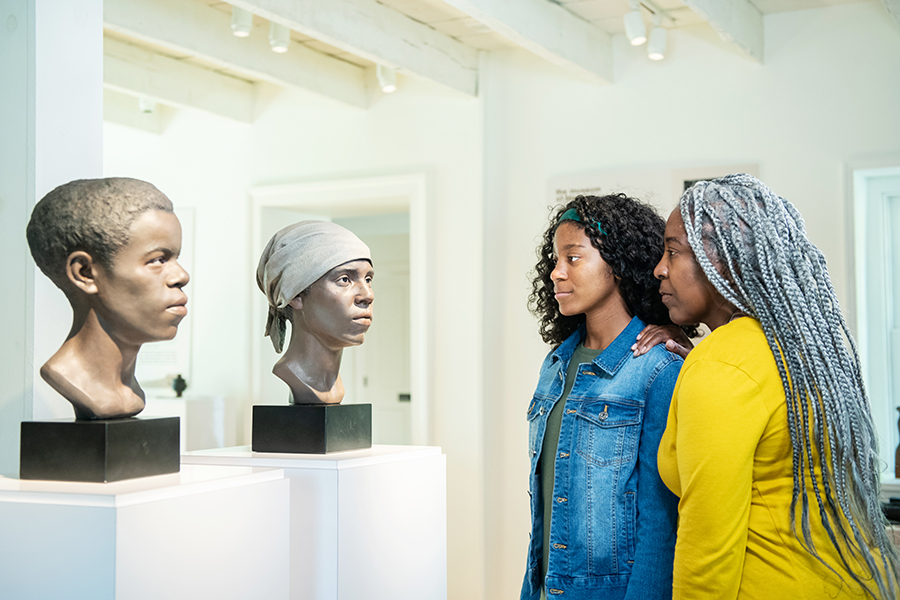
Catoctin Furnace Historical Society
Wherever slavery occurred, enslaved people sought freedom. But some sites could be particularly helpful in enabling escape. Maryland as a whole played a key role in facilitating the journey North, not only because of its proximity to Pennsylvania, but also because of its more industrialized economy. Enslaved laborers who possessed industrial skills, such as metalworking, were in demand and could at times travel for work to different industrial sites. That gave them the opportunity to connect with each other and learn about safe places to escape to and from.
“Iron furnaces, in particular, could be called a hotbed, if you will, of Underground Railroad movement,” says Elizabeth Comer, president of the Catoctin Furnace Historical Society.
Furnaces were critical to the economy and function of the United States during the days of slavery–they forged the iron that supported everything from daily cooking to the war effort. At Catoctin Furnace, a village of enslaved and free laborers grew up outside the furnace, and as those laborers came and went, they could take note of the best routes of escape. Multiple freedom seeker ads show that some may have been successful in attaining their freedom.
When you visit the site, you’ll see how the laborers lived, thanks to multiple standing structures and the Museum of the Ironworker, converted from a laborer’s former home. Make sure to take the trail to the African-American cemetery, which features stories from the enslaved families who lived there.
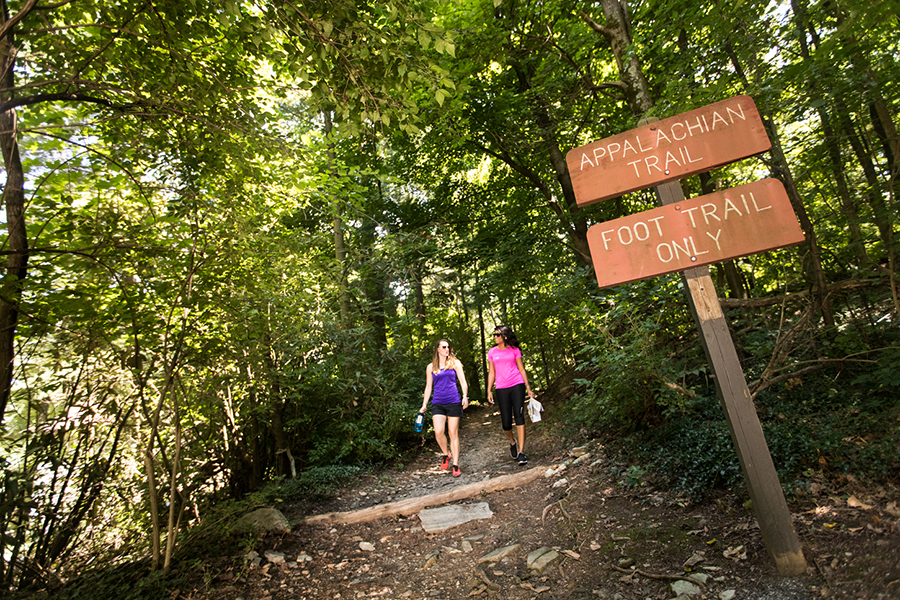
The Appalachian Trail
Of course, the story of the Underground Railroad includes more than historic sites and independent flights to freedom. It’s also made up of the efforts of individual guides, finding their own way through the wilderness as they tried to lead their group to safety.
Many of these paths are not part of the National Underground Railroad Network to Freedom, due to the necessary secrecy of these routes, and neither is the Appalachian Trail. But its forested expanse undoubtedly provided cover for many freedom seekers. Like Harriet Tubman on Maryland’s Eastern Shore and elsewhere, the Underground Railroad relied on a mastery of wilderness navigation.
When heading from Catoctin to your next stop, consider stopping for a short walk or hike along the trail–and imagine the immense bravery required by Tubman and those she helped as they moved through the woods alone after dark, avoiding capture and hoping to create a new life.
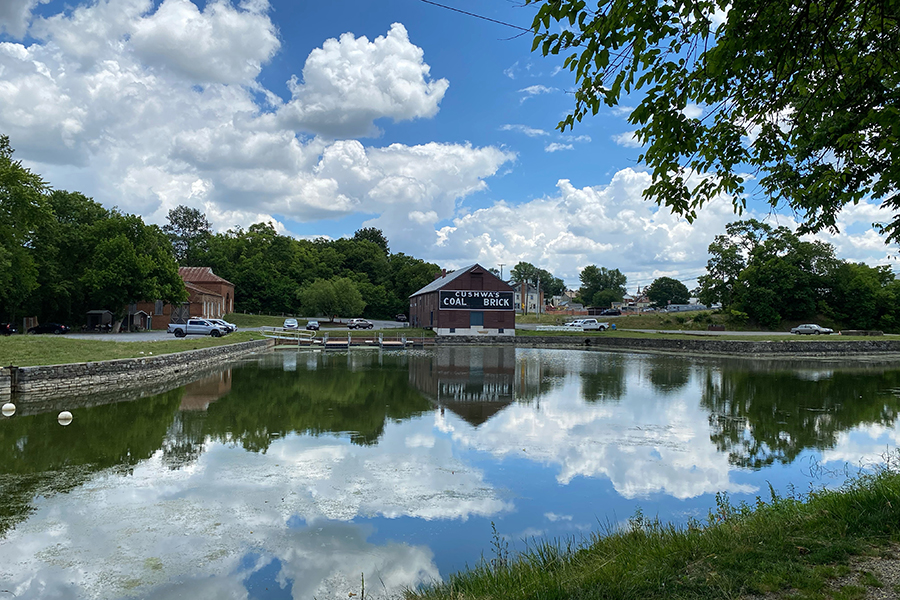
Chesapeake & Ohio Canal National Historical Park
The path to freedom itself was also complex, and didn’t just run through the wilderness and secret spaces in towns and communities. Enslaved people used every way they could to escape to freedom, whether that meant heading into uncharted territory or traveling all the way to Canada, especially after the Fugitive Slave Act enabled enslavers to bring back enslaved people from the North, making even those states unsafe.
“I think people have this idea of the Underground Railroad as they followed the North Star and they went North,” notes Evans. “Depending on where they were, some went to the swamps. Particularly in South Carolina, they went to Florida, or they integrated with Native American tribes. There were a lot of different places they went to.”
Canals represented another route for enslaved people to gain their freedom. The canal industry sought out both free and enslaved laborers to build out the canal, creating communities that could support the Underground Railroad. In addition to providing another escape route by water, a portion of the canal marked the northern boundary of the Confederacy, and both free African-Americans and even Union troops would aid enslaved people seeking to cross to freedom.
Today, the canal is a great place to hike, bike and boat, as well as explore the towns that sprang up to support the canal and rail industries, as you make your way to the next historic stop.
Hagerstown Underground Railroad
The communities of Maryland featured many instances of brave, individual escape to the more secure and organized Underground Railroad up north. But sometimes, formerly enslaved and free African-Americans put themselves at risk to help others find freedom too.
The town of Hagerstown is full of just those kinds of stories, and they’ve taken pains to unearth and detail those narratives for visitors. Exploring eleven sites throughout the town, you’ll encounter stories of men like James W.C. Pennington, who was born into slavery, escaped, and then helped extend the Underground Railroad into western Maryland, in addition to becoming a prominent abolitionist writer. Also of note are figures like Bill Bell, who physically resisted enslavers with a hatchet, and Henry Wagoner, who acted as a covert agent for the Railroad until his actions attracted suspicion, forcing him to flee West.
Each of these sites are marked out on a map in Hagertown’s handy brochure with accompanying detailed narratives. Just download it or print it out before heading to the scenic town.
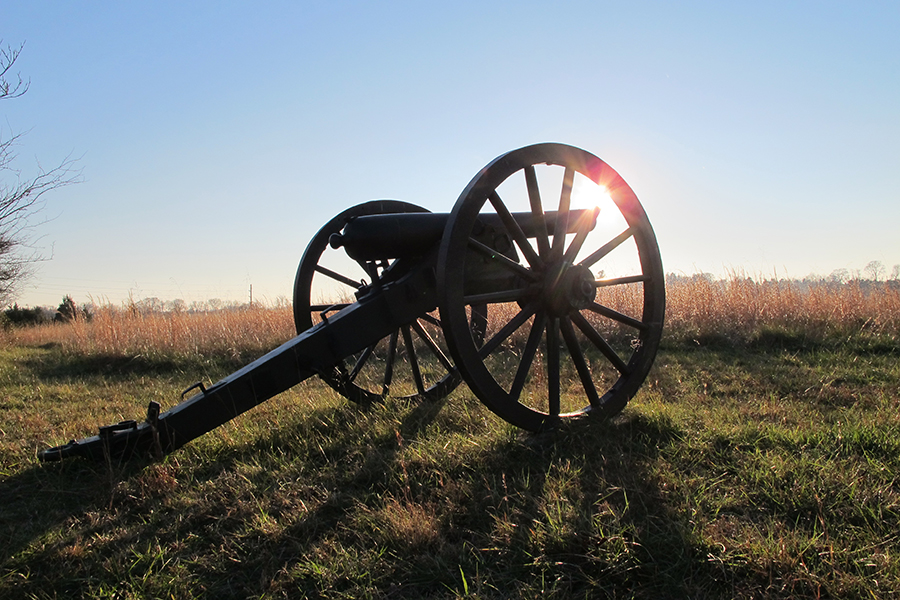
Antietam National Battlefield
The site of the bloodiest day in the war is your final stop, but it’s also a hopeful one. After a string of losses, President Lincoln had been hesitant to issue what would become the Emancipation Proclamation, fearing that it would look like a desperate ploy, rather than an idealistic step toward the end of slavery. The Battle of Antietam was close enough to a victory for the Union that it gave Lincoln an opportunity to present the Emancipation Proclamation with confidence. When you come to visit the battlefield, make sure to check out the Visitor Center’s new exhibit on the battle’s close relationship with this huge step toward freedom.
However, it’s important to remember that the fight for freedom didn’t end there. The Emancipation Proclamation declared only enslaved people in the Confederacy free, and border states like Maryland still had to rule in favor of freedom on their own. That came in the form of an amendment to the state constitution –and that’s when you could see the effects of freedom start to take hold in the state.
Near the battlefield is one of the key examples of free African-Americans taking charge of their community–Tolson’s Chapel in Sharpsburg, founded in 1865. There, Black landowners provided land and funding for a chapel at the end of the war, where both previously and newly free Black members of the community could gather.
“I think that part of their celebration [at the end of slavery] was establishing this independent congregation,” says historian Edie Wallace. “It was their very public way of saying, ‘Yes, we are a free community.’”
Inside the chapel, African-American community members were free to speak in a large public space that belonged entirely to themselves. And as the community around it grew, the chapel functioned not just as a place of worship and connection, but as a schoolhouse, a place for those freed from slavery to learn to read and write.
“We call it the rest of the story of the Civil War, because this really illustrates the outcome of the American Civil War,” Wallace says.
The chapel no longer functions as a place of worship, but you can still call ahead to schedule a tour. In the silence of the small building, reflect on all the efforts that you’ve seen across your trip, all to find simple, safe places of freedom like this.
This is a paid partnership between Heart of the Civil War Heritage Area and Philadelphia Magazine
Source link


